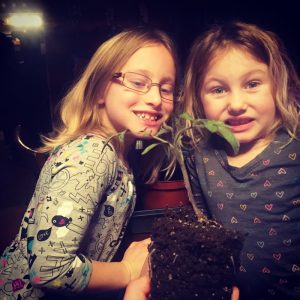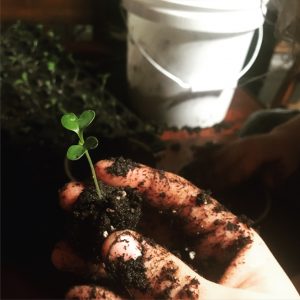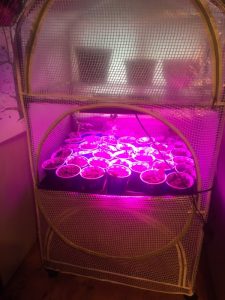 When we moved into our house in October, I started itching to grow something. This is the first time I’ve owned my own little part of the earth, and that is about as tangible as life gets for a gardener. The weather was turning colder, and everyone around us was settling in for winter. Cutting wood is a more appropriate fall time activity in Alaska, or so my husband tells me, but I decided I was going to grow food in our tiny cabin. So, I did what I do best, and wrote a list.
When we moved into our house in October, I started itching to grow something. This is the first time I’ve owned my own little part of the earth, and that is about as tangible as life gets for a gardener. The weather was turning colder, and everyone around us was settling in for winter. Cutting wood is a more appropriate fall time activity in Alaska, or so my husband tells me, but I decided I was going to grow food in our tiny cabin. So, I did what I do best, and wrote a list.
Supplies list:
Germination Station Kit w/ heat pad
Soil
 Like most other worthwhile endeavors, there are many different ways to grow indoors. Some people turn their family’s fish tanks into aquaponic systems rather than using soil. Windowsill gardens work especially well in apartments or tiny homes. Some choose to dedicate a table or even a whole room to growing food. This summer, before we had bought our home, I stumbled upon a seedling rack / greenhouse at a local thrift store and bought it without a second thought.
Like most other worthwhile endeavors, there are many different ways to grow indoors. Some people turn their family’s fish tanks into aquaponic systems rather than using soil. Windowsill gardens work especially well in apartments or tiny homes. Some choose to dedicate a table or even a whole room to growing food. This summer, before we had bought our home, I stumbled upon a seedling rack / greenhouse at a local thrift store and bought it without a second thought.
Once you choose a space, you can decide what you’ll have room to grow. There are so many options: sprouts, microgreens, flowers, herbs, tomatoes, kale, lettuce, carrots… Your seed choice will likely be based primarily on space restraints. Since I wanted this project to be a learning tool for the kids, and as a way to experiment as a gardener, we decided to go big. We ordered a variety of seeds, and narrowed it down to growing kale, lettuce, tomato, basil, and green onions.
For simplicity, I bought a kit that came with a heat pad, base  tray, 72-cell seedling insert, and a humidity dome. Since seeds need warmth and moisture to germinate, this kit was perfect. The next component to consider when indoor gardening are the lights. Unless your home is made out of glass, and even if it is, you will need artificial light. Of course, there are many, many options, but I decided to buy LED lights.
tray, 72-cell seedling insert, and a humidity dome. Since seeds need warmth and moisture to germinate, this kit was perfect. The next component to consider when indoor gardening are the lights. Unless your home is made out of glass, and even if it is, you will need artificial light. Of course, there are many, many options, but I decided to buy LED lights.
When my seedlings were two weeks old and had developed good root structure, we transplanted them into Solo cups so they could have a little more room to spread their roots. We will be transplanting to 6’ pots next. As they grow, we will have new challenges to find space for them around our small cabin, but having the ability to grow healthy food year-round makes it worthwhile.
In the meantime, the girls have named a few of them and talk to them like they are their pets. We make weekly observations, and  enjoy the smell of fresh plants when everything outside smells of ice. The pink lights make nice night-lights, and pretty soon we’ll even be rewarded with healthy veggies to add to our salads. Growing indoors can be a dirty process, but a gardener’s got to garden, even if it’s 40 below.
enjoy the smell of fresh plants when everything outside smells of ice. The pink lights make nice night-lights, and pretty soon we’ll even be rewarded with healthy veggies to add to our salads. Growing indoors can be a dirty process, but a gardener’s got to garden, even if it’s 40 below.
Additional resources:
Year-Round Indoor Salad Gardening
About Sarah Richards
Twitter •
Interesting. How are you powering your LED’s?
Thank you, shared.